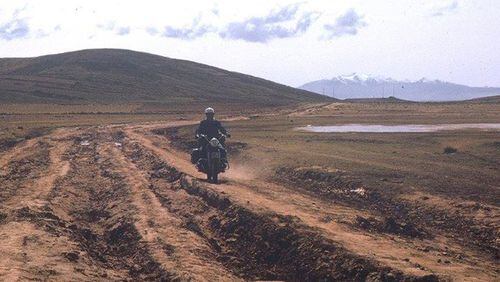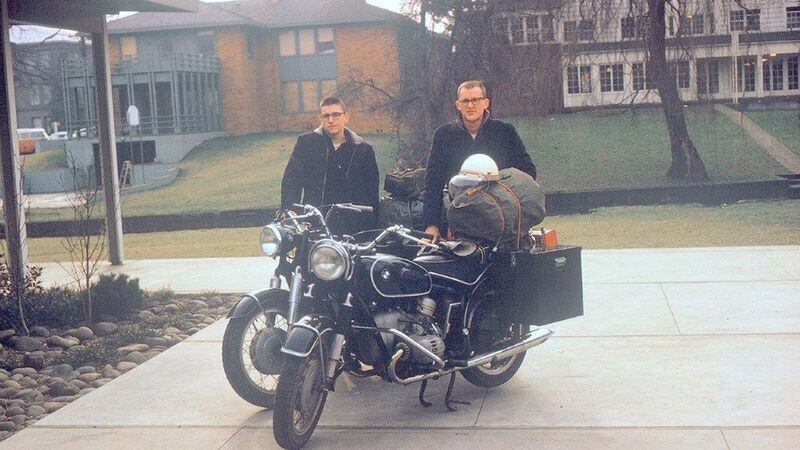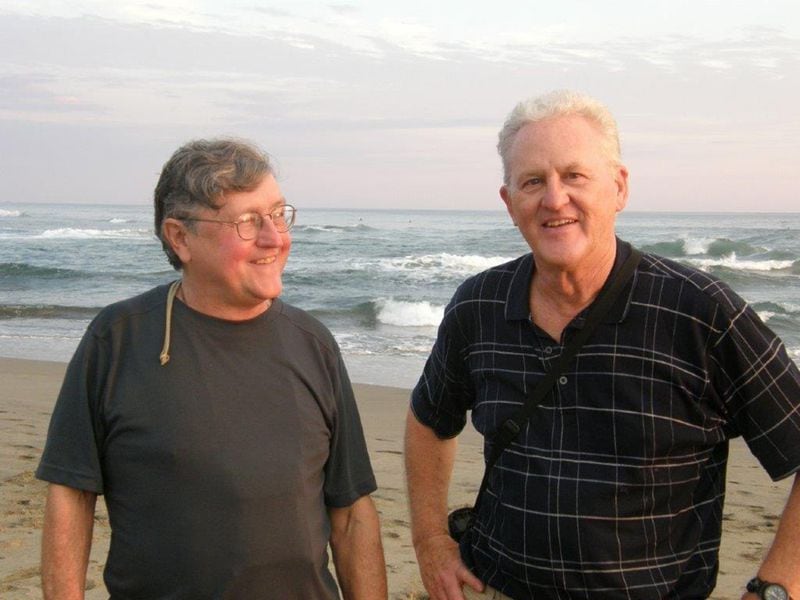TACOMA, Wash. — He rode the Pan American Highway before it was paved. He spent three days in a Peruvian jail. His motorcycle broke down in Mexico. Canned sardines were a regular meal.
Keith Thye of Ruston loved the adventure so much, he decided to recreate it 50 years later.
In 1963, Keith Thye dropped out of classes at the University of Oregon and rode his motorcycle from Portland to Chile. His friend, Dave Yaden of Portland, joined him on the six-month trip that covered 25,000 miles and cost them each just $1,200.
“We just wanted to have a youthful adventure,” Thye said. “We didn’t know it at the time — and we didn’t really care — but it turned out to be one of the first recorded motorcycle trips through the Americas.”
In 2013, they did a 16,000-mile, 100-day, considerably more luxurious (hotels and restaurant food pushed the budget to $16,000 each) version of the trip starting in San Diego. This time, four friends joined them.
Earlier this year, Thye released a pair of self-published books about the trips. In 1990 he wrote “Moto Raid,” the story of the first trip. “Ride On: Moto Raid II” was published this year.
Thye, 74, is president of South Sound Motorcycles, which is owned by his wife, Ann Thye. He’s enjoyed a lifetime of motorcycle adventures spanning four continents, but the trips to Chile remain special.
In ’63, Thye and Yaden chose Pucon, Chile, as their destination because it was the sister city of their hometown, Lake Oswego, Oregon.
“It was a true adventure with a few incidents that we will remember for the rest of our lives,” Thye said.
Thye says the mostly unpaved Pan-American Highway circa 1963 was “like riding in a dry stream bed.” At many rivers the bridges weren’t yet built, so the men had to ford the rivers then dismantle and dry out their carburetors.
Just shy of the Guatemala border, Thye broke his clutch and needed to find a way to Guatemala City for repairs. They managed to find a ride to the Guatemala border where they were left to fend for themselves. The men tethered Thye’s bike to Yaden’s, and towed Thye through a notorious landslide area. They needed three days to cover 100 miles.
Credit: Courtesy Keith Thye
Credit: Courtesy Keith Thye
The men selected 1958 BMW R50s for the trip because it was the only manufacturer with dealerships along their route. The decision paid off as they got their repairs in Guatemala City then returned to the road.
It was hardly the most harrowing experience of the trip. In Peru, the men were thrown in what Thye describes in “Moto Raid” as a “dank, dark and very cold” jail cell. Perplexed why these men would take such a journey, local law enforcement officials assumed they were drug dealers.
Thye and Yaden finally convinced the officials to give them a phone call. They called the U.S. Embassy, where they were advised to sit tight and wait for a surprise visit from a U.S. official.
“They warned us that if we told them they (U.S. officials) were coming, (the Peruvian officers) would plant drugs on our bikes and we’d spend the rest of our lives in prison,” Thye said.
The plan worked and the men were out after three days in jail. “We were very fortunate,” Thye said.
Credit: Courtesy Keith Thye
Credit: Courtesy Keith Thye
After the trip, the men went their separate ways. The talked only a couple times each year until the idea was hatched to recreate the trip in 2013. Planning took nearly a year, about as long as the first trip.
There were harrowing experiences on the second trip, too. They didn’t ride often at night because they were warned doing so increased the likelihood of being attacked by drug cartels. And Yaden had a nasty accident that ended his trip six days early.
“I was right behind him and I couldn’t believe he survived,” Thye said.
Much was different about the two trips. Roads were paved, modern motorcycles offered improved rides, GPS and credit cards offered more convenience than maps and traveler’s checks, and communication was much easier. On the first trip they wrote letters home. In 2013, email, text messages and Skype made real-time communication possible.
“But the people (met along the way) were very, very nice both trips,” Thye said. “That’s the one thing that didn’t change.”








